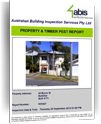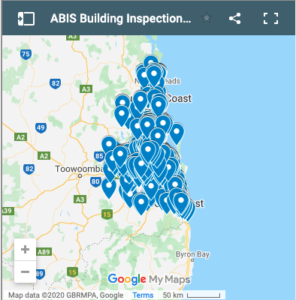Fuses, circuit breakers and safety switches interrupt excessive current. To a greater degree than a circuit breaker, a safety switch is an electrical safety device specifically designed to provide a high level of personal protection from electric shocks. Safety switches are an insurance against electric shock and are designed to prevent injury or death. They monitor the flow of eletricity through a circuit and automatically shut off the electricity supply when current is detected leaking through faulty switches, wiring or electrical appliances. This stops the chance of a current flowing to earth though a person and electrocuting them. If a safety switch detects even a very small irregularity in power supply, it will switch the power off within 10 to 15 milliseconds to prevent electric shocks.
However, nothing is failsafe. The safety switch should be regularly checked. Just like a smoke detector or other safety device, if it is not working properly, it cannot protect you.
3 Types of Safety Switches
-
Switchboard units – installed on the main switchboard, these provide complete installation protection or selected circuit protection
-
Power point units – inbuilt in a standard power point, these provide single point or single circuit protection
- Portable units – these are suitable for use with extension cords and portable power tools
It is recommended that safety switches be installed by a licensed electrician to protect all power points and all appliances should always be kept in good working order.
All homes have circuit breakers or fuses. These are designed to protect the wiring and appliances within your home. Only safety switches are designed to protect people. Safety switches are not the same as circuit breakers or fuses. They are an additional form of protection to be used with circuit breakers and fuses.
Safety switches are often confused with circuit breakers and surge protectors however, both fuses and circuit breakers do not provide personal protection against electrical shock.
Surge protectors
Surge protectors safeguard appliances and wiring from voltage surges such as those resulting from a lightning strike.
Circuit breakers
Circuit breakers cut the power off when electrical wiring in a building has too much current flowing through it. Too much current flowing through a circuit would heat an electrical appliance’s wires or the building wiring to unsafe levels. This could result in an electrical fire.
All homes built since 1992 must have safety switches installed on power circuits.
If you are building a new home you must have a safety switch installed by a licensed electrician on both power and lighting circuits. If you buy a property without a safety switch, you must have a licensed electrician install a safety switch for the power circuits within 3 months of a property transfer. This applies to any transfer of domestic premises including estate, family law and mortgagee transfers.
If you sell a property, you must first establish whether a safety switch is installed for power circuits and this must be declared on the standard sales contract and Form 24 Property Transfer.
For a rental home, if it is subject to a residential tenancy agreement from 1 March 2006, the owner must have a safety switch installed by a licensed electrician for power points within 6 months of the agreement, or in any case by 1 March 2008.
If you buy a domestic residence or enter into a residential tenancy agreement for a domestic residence you own you have a legal requirement to have a safety switch installed by a licensed electrician for general purpose socket outlets if there is not one already installed. If a safety switch is not installed by the cut-off date you may be liable for fines in excess of $1000.
Safety switches are not failsafe and should be regularly tested just like smoke detectors and other safety devices to ensure that they are fully functional. Every 3 months, this testing is done by simply pressing the TEST button which should automatically trip the switch to the off position. Reset by pushing the switch back to on. If this doesn’t ork then a licensed electrician should be contacted immediately. It is also important to ensure that electrical appliances, electrical wiring, extension leads, and other electrical equipment are regularly checked and kept maintained in good working order.
Electrical Safety Tips
-
Install safety switches to protect all power points
-
Read all instructions for appliances carefully before using them to ensure that they are used correctly and safely
-
Switch off appliances before removing the plug from the power point
-
Switch off appliances at the power point when not in use
-
If an appliance fails to operate, blows a fuse, overheats or sparks heavily, disconnect it and have it checked by a licensed electrician
-
Broken switches and sockets are dangerous and should be immediately replaced by a licensed electrician
-
Because light fittings are usually connected to live wires, even if the switch is turned off, they should not be removed for painting
-
Aluminium ladders, metal scaffolding and painter’s trestles should not be used when working close to wiring
-
Nailing and fixing metal roofing and tile battens should be undertaken carefully to avoid contact with electrical cables
- Electrical equipment should be kept away from pools and spas at all times and extension cords should never be used near a pool.
Safety in Bathrooms, Laundries and Wet Areas<
-
Never use electrical appliances near basins and baths that contain water
-
Use permanently fixed electric wall heaters
-
Always unplug electrical appliances when not in use
- Ensure children cannot pull electrical appliances into the bath, shower or basin
Cords and Plugs
-
Always remove a plug from the power point by firmly grasping the plug, not the cord
-
Look out for damaged or incorrectly wired cords and plugs
-
Regularly check all cords, particularly extension cords for fraying or wear and tear
-
Never repair worn or damaged cords with PVC insulation tape – replace the cord
-
Avoid overloading power points by connecting double adaptors in piggy-back fashion or by connecting one power board to another
- If an extension cord is wound on a reel, always fully unwind it before use – otherwise it could overheat if used for heavy electrical loads.




